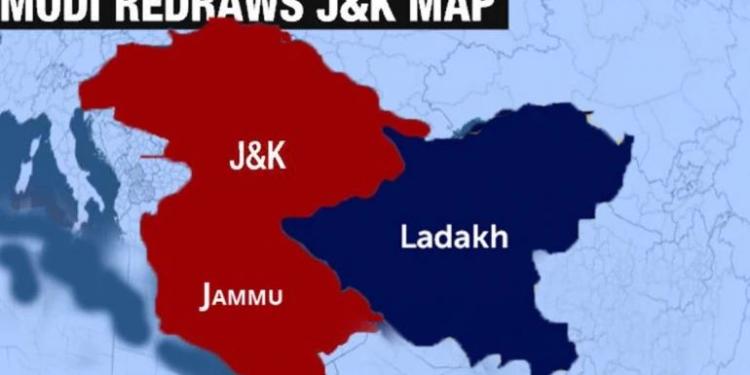The Narendra Modi government on Monday, in a historic move revoked the special status given to Jammu, Kashmir and Ladakh; and concluded the process of complete amalgamation of the said regions with India which had started with the signing of Instrument of Accession between then princely state of Jammu and Kashmir and Dominion of India nearly 72 years ago in October of 1947.
The announcement of the revocation was made by Union Minister Amit Shah in both the houses of parliament, what followed were nationwide celebrations nonetheless some political parties were not happy with developments and had registered their opposition to this critical change of status-quo. Political parties opposing this move included Congress, TMC, DMK, NCP, PDP, NC, JD(U) and the RJD, while surprisingly staunch opponents of the current ruling dispensation AAP and BSP came out and supported this progressive move.
With the passing of this bill, the number of union territories in India will increase from 7 to 9. The nine union territories; without their own legislatures: Andaman and Nicobar Islands, Chandigarh, Dadra and Nagar Haveli, Daman and Diu, Ladakh and Lakshadweep; union territories with their own legislatures: Jammu and Kashmir, National Capital Territory of Delhi and Pondicherry.
During the discussion on the reorganization of states in 1956, the States Reorganization Commission recommended the creation of a different category for these territories since they neither fit the model of a state nor do they follow a uniform pattern when it comes to governance.
It was observed that these “economically unbalanced, financially weak, and administratively and politically unstable” territories can’t survive as separate administrative units without depending heavily on the union government. Thus the union territories were formed.
Nonetheless as the sequence of events followed from the buildup of security forces in the region over past few weeks, speculations were ripe over ‘trifurcation’ of the state into Jammu, Kashmir and Ladakh however the administration again giving an indication of the diligent thought behind the reorganization has decided to go ahead with a different setup i.e. while Ladakh was given an independent identity as a union territory, Jammu and Kashmir were kept together as the second union territory, essentially bifurcating the state.
Moreover, for Ladakh, the debate of a separate identity is not new and has been a long-standing demand in the state. Ladakh MP Jamyang Tsering Namgyal had also indicated towards the same. He said people of Ladakh had been demanding a union territory status for the region since 1948 as they were always discriminated against by “Kashmir-centric leaders”.
However for Jammu and Kashmir, the identity and the politics has been largely intertwined and trifurcation would have resulted in essentially Muslim majority Kashmir, Hindu majority Jammu and Buddhist majority Ladakh, which would have been, at least in appearance, a communal decision.
Kashmir, which has been plagued by radical separatism for long, would have surely been on a disadvantage if, though only seemingly, these regions were trifurcated; ultimately leading to three regions with different religious majorities which could be further be used by Pakistan and radical separatist in the state to propel their sinister plans.
The bifurcation, instead of trifurcation, not only achieved the objective of equitable distribution of resources without resorting to division along communal lines but also paved the way for greater opportunities of integration among the societies of the two regions who have been instilled an ‘artificial’ sense of alienation for long for both political and personal reasons.


































